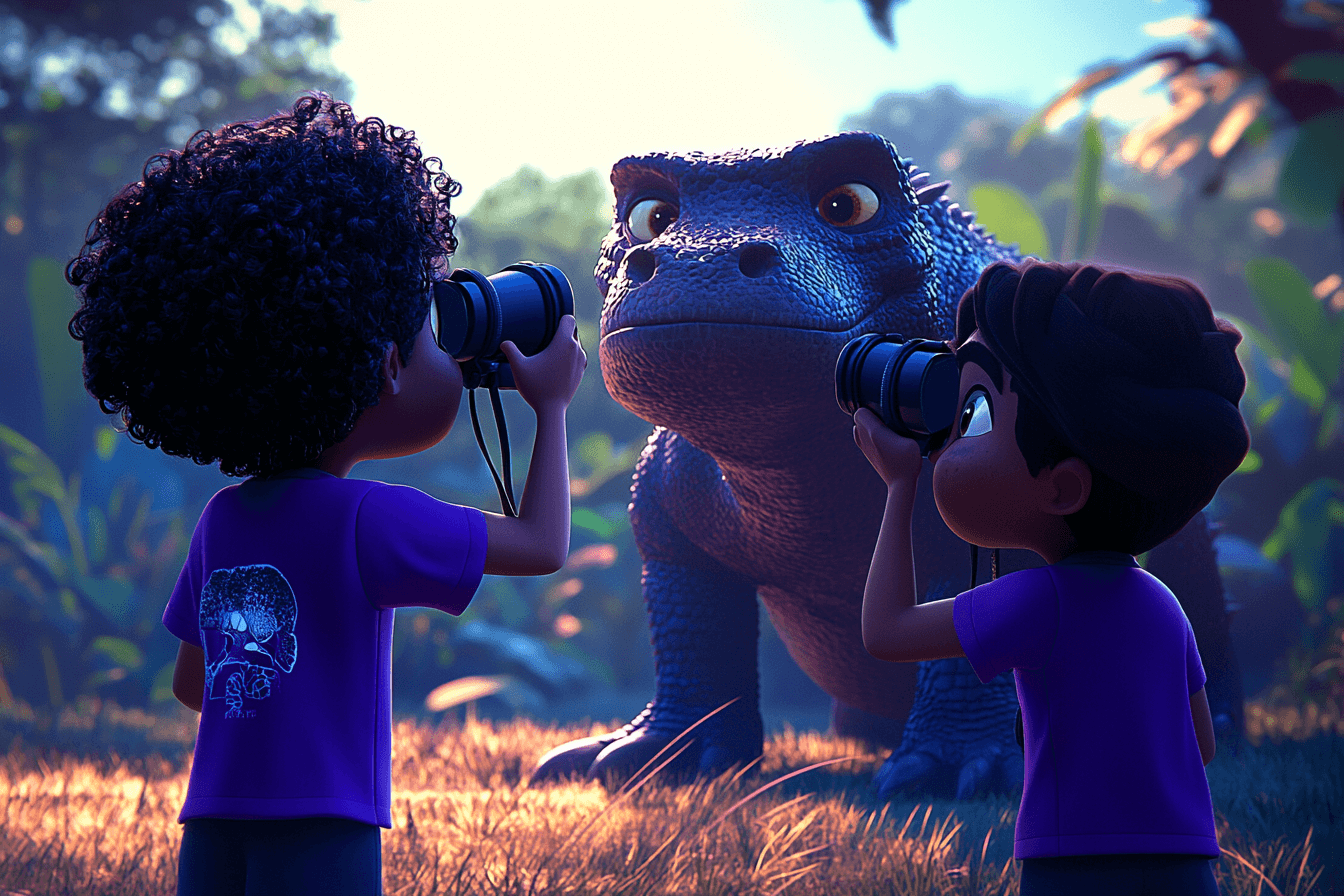Komodo dragons are fascinating creatures that capture the imaginations of kids and adults alike. These large lizards, native to a few Indonesian islands, have unique characteristics that make them truly one-of-a-kind. In this article, we will explore fun facts for kids about komodo dragons that will surely leave young readers wanting to learn more.
Understanding Komodo Dragons
What are Komodo Dragons?
Komodo dragons, scientifically known as Varanus komodoensis, are the largest lizards on Earth. In fact, they can grow up to 10 feet long and weigh around 150 pounds! They have a sleek body covered in rough, scaly skin and a long, powerful tail. These incredible creatures are apex predators, meaning they are at the top of the food chain in their ecosystem. Their sharp claws, powerful jaws, and keen sense of smell make them formidable hunters.
Despite their intimidating size and appearance, Komodo dragons are also known for their intelligence and complex social behaviors. They are capable of learning and adapting to their environment, making them fascinating subjects for scientific study.
Where do Komodo Dragons Live?
Komodo dragons are native to the Indonesian islands of Komodo, Rinca, Flores, Gili Motang, and Padar. These islands are part of the Komodo National Park, a protected area that serves as their natural habitat. The hot and dry climate of these islands provides the perfect environment for these reptiles to thrive. The rugged terrain and diverse vegetation on these islands offer ample opportunities for Komodo dragons to hunt for prey and seek shelter.
Despite their limited range, Komodo dragons play a crucial role in maintaining the ecological balance of their habitat. As apex predators, they help control the population of herbivores, preventing overgrazing and preserving the delicate ecosystem of the islands. Their presence is a testament to the importance of conservation efforts in protecting endangered species and their natural habitats.
Fascinating Features of Komodo Dragons
The Size and Appearance of Komodo Dragons
As mentioned earlier, komodo dragons are the largest lizards in the world. Their size alone makes them a truly remarkable creature. With their muscular bodies, sharp claws, and long, forked tongues, they have a fearsome appearance that demands respect.
Furthermore, the skin of a Komodo dragon is covered in small, armored scales that act as a form of natural protection. These scales not only provide defense against potential predators but also help regulate the dragon’s body temperature by absorbing and retaining heat from the environment.
The Unique Abilities of Komodo Dragons
Beyond their imposing size, komodo dragons possess some incredible abilities. First and foremost, they have a keen sense of smell that helps them locate their prey from miles away. Additionally, these reptiles have venom glands that release a toxic substance when they bite their prey. This venom, combined with their strong jaws, makes them lethal hunters.
In addition to their hunting prowess, Komodo dragons are also skilled climbers and swimmers. They can scale trees and swim long distances in search of food or to escape danger. This versatility in their movement allows them to thrive in a variety of habitats, from dense forests to coastal regions.
The Lifestyle of Komodo Dragons
What do Komodo Dragons Eat?
Komodo dragons are carnivorous creatures with a diverse diet. They primarily feed on carrion, or decaying animal flesh. However, they are also skilled hunters that can take down large prey, such as deer and water buffaloes, by ambushing them with lightning-fast speed. These giant lizards are truly formidable predators. Check out how fast komodo dragons can run here.
In addition to their impressive hunting skills, Komodo dragons have a unique way of killing their prey. They possess venom glands in their lower jaws that secrete toxic proteins, causing their victims to go into shock and preventing blood from clotting. This deadly combination of sharp teeth and venom makes them one of the most efficient predators in the animal kingdom.
How do Komodo Dragons Behave?
Komodo dragons are solitary animals and prefer to live alone. They are most active during the day, spending their time basking in the sun to regulate their body temperature. When they are not hunting or basking, they can be found digging burrows in the ground for shelter and protection.
Despite their solitary nature, Komodo dragons are not entirely anti-social. They communicate with each other through a range of vocalizations, body language, and chemical signals. Males are known to engage in fierce battles during mating season to establish dominance and win the right to mate with females. These interactions play a crucial role in maintaining the social hierarchy within the Komodo dragon population.
The Role of Komodo Dragons in their Ecosystem
Komodo Dragons as Predators
As top predators in their habitat, komodo dragons play a crucial role in maintaining the balance of their ecosystem. Their hunting behavior helps control populations of animals they prey upon, preventing overpopulation and ensuring the survival of other species. They are an intricate piece of the ecosystem puzzle.
Komodo dragons are known for their stealthy hunting tactics and powerful jaws, capable of taking down prey much larger than themselves. Their diet consists mainly of deer, wild boar, and water buffalo, making them essential for regulating the population of herbivores in their environment. By keeping these populations in check, komodo dragons help prevent overgrazing and maintain the delicate balance of the ecosystem.
Komodo Dragons and Conservation Efforts
While the existence of komodo dragons is awe-inspiring, these marvelous creatures are classified as vulnerable by the International Union for Conservation of Nature (IUCN). Habitat loss, poaching, and climate change threaten their population. It is crucial for us to support conservation efforts and raise awareness about these incredible lizards to ensure their survival.
Conservation initiatives aimed at protecting the habitats of komodo dragons are essential for their long-term survival. These efforts involve creating protected areas where these reptiles can thrive undisturbed, as well as implementing strict anti-poaching measures to combat illegal hunting. Additionally, educating local communities and tourists about the importance of preserving the natural habitats of komodo dragons is key to fostering a sense of stewardship and responsibility towards these majestic creatures.
Interesting Trivia About Komodo Dragons
Record-Breaking Komodo Dragons
Did you know that the largest recorded Komodo dragon measured an incredible 10.3 feet long and weighed approximately 366 pounds? This colossal lizard was an exceptional example of the species. These records highlight the undeniable fact that komodo dragons are truly giants of the reptile world.
But wait, there’s more to these impressive creatures! In addition to their size, Komodo dragons possess a keen sense of smell, aided by their long, forked tongues that they use to detect prey from several kilometers away. This remarkable adaptation contributes to their prowess as apex predators in their natural habitat.
Fun Facts You Didn’t Know About Komodo Dragons
Here’s a fun fact: Komodo dragons are also known to engage in a behavior called “shimmering” during territorial disputes. This involves shaking their bodies and displaying their colorful skin, creating a visually striking spectacle. Another interesting tidbit is that female komodo dragons can reproduce through a process called parthenogenesis, where they lay fertilized eggs without the need for a male partner. These fun facts provide a glimpse into the captivating world of these reptilian giants.
Delving deeper into the world of Komodo dragons, it’s fascinating to note that these creatures have a unique hunting strategy. They often rely on their powerful jaws and serrated teeth to deliver a single, lethal bite to their prey. The venomous bite contains toxic proteins that induce shock and prevent blood clotting, ultimately leading to the demise of the unfortunate victim.
So, there you have it—ten fascinating facts about komodo dragons that are sure to spark the curiosity of any young explorer. Remember to always respect these magnificent creatures and continue to learn about their unique traits and the importance of conservation efforts. Komodo dragons truly are a wonder of the animal kingdom!
You might be interested:



